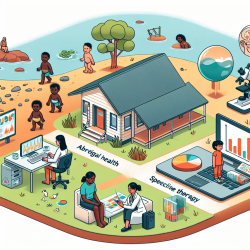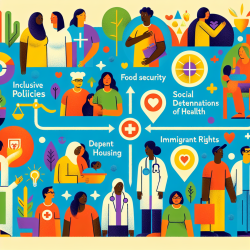Introduction
The COVID-19 pandemic has left an indelible mark on various aspects of global health, including child and youth mortality. A recent study titled Changes in stillbirths and child and youth mortality in 2020 and 2021 during the COVID-19 pandemic sheds light on the pandemic's impact on young populations across the globe. As practitioners dedicated to improving child outcomes, it is crucial to understand these findings and incorporate them into our practices. This blog explores how the insights from this study can enhance speech therapy services, particularly in an online setting like those provided by TinyEYE.
Key Findings from the Study
The study analyzed data from 112 countries in 2020 and 104 in 2021, focusing on stillbirths and mortality rates among individuals under 25. The results indicated that, despite the pandemic's severity, most countries experienced expected levels of stillbirths and youth mortality. However, a significant minority of countries saw increases in stillbirths and young adult mortality, particularly in 2021.
- Stillbirths and under-25 mortality remained as expected in most countries.
- Increases in stillbirths were observed in 20% of countries in 2021.
- A quarter of the countries experienced higher mortality rates in the 20-24 age group in 2021.
- These changes were consistent across genders and income levels.
Implications for Speech Therapy
Understanding these mortality trends is crucial for speech therapists who work with children, as they highlight the indirect effects of the pandemic on young populations. The disruptions in healthcare and socioeconomic conditions could have long-term impacts on child development, including speech and language skills. Here are some ways practitioners can leverage this research:
- Enhanced Monitoring: Regularly assess the speech and language development of children, especially those who may have experienced healthcare disruptions.
- Tailored Interventions: Develop personalized therapy plans that consider the potential delayed effects of the pandemic on child development.
- Parental Involvement: Educate parents about the importance of monitoring developmental milestones and encourage their active participation in therapy sessions.
- Data-Driven Decisions: Use data from ongoing studies to adjust therapy approaches and ensure they are effective in the current context.
Encouraging Further Research
While the study provides valuable insights, it also highlights the need for continued research to fully understand the pandemic's long-term effects on child development. Practitioners are encouraged to stay informed about new research findings and consider participating in studies that explore the impact of COVID-19 on speech and language development.
Conclusion
The COVID-19 pandemic has presented unique challenges and opportunities for those working in child development fields. By understanding and applying the findings from the study on stillbirths and child mortality, speech therapists can enhance their practice and contribute to better outcomes for children. Continuous monitoring and research are essential to adapt to the evolving needs of young populations.
To read the original research paper, please follow this link: Changes in stillbirths and child and youth mortality in 2020 and 2021 during the COVID-19 pandemic.










